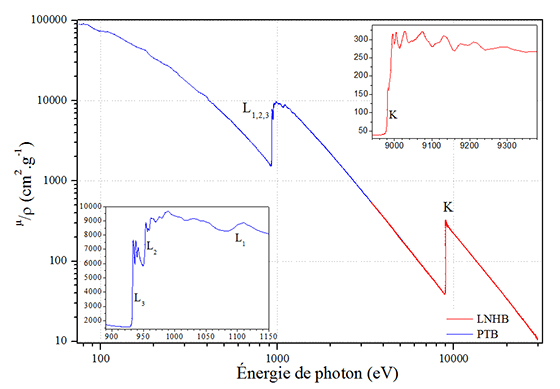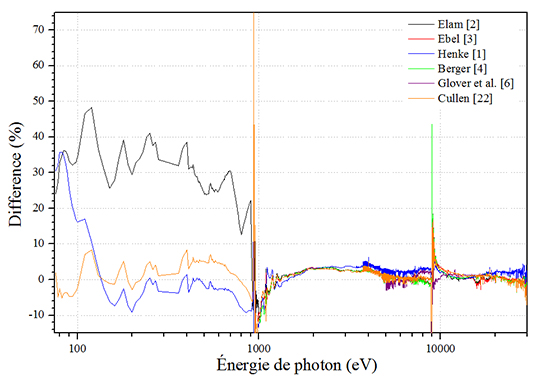Analytical techniques using X-rays (X-ray fluorescence spectroscopy, X-ray absorption, optical characterization, etc.) require knowledge of fundamental atomic data, and in particular the mass attenuation coefficients.
The study published in the journal Metrologia by Yves Ménesguen and Marie-Christine Lépy (CEA-LIST), consists of new precise measurements of these attenuation coefficients, carried out by the Laboratoire National Henri Becquerel (French National Metrology laboratory for ionizing radiation) on the METROLOGY beamline at SOLEIL.
X-ray applications such as fluorescence analysis, absolute quantification and especially characterization of optics and filters require knowledge of fundamental atomic data for accurate quantification. Thus, mass attenuation coefficients are a basic parameter characterizing the penetration of the incident beam in the sample and also the attenuation of fluorescent radiation when emitted. Users of these attenuation coefficients can find them listed in databases made accessible through the internet on websites such as NIST, which provides the compilation made by Hubbell, under the name XCOM. Certain measurements and calculations carried out by Chantler are also made available by NIST under the name FFAST. CXRO then calculates filter transmission, mirror reflectivity etc. based on Henke’s compilation. Another accessible database called EPDL97 has been assembled by the AIEA.
Ancient and often imprecise references
Although very practical for the user, these tables are based on very old measurements or on theoretical calculations when the measurements are missing. However, the associated uncertainties can be quite large, especially for some lower photon energies below a few keV. Indeed, the weaker the energy, the more absorbent is the element and thinner the sample should be as the uncertainty associated with the thickness measurement is large. Systematic biases may also occur. Finally, the estimated uncertainties of existing values below 1 keV are a few % for all elements and certainly above 25% for those below 500 eV. Recent measurements have also revealed significant differences of a few % above certain K-edge absorption thresholds.
Comparison and sharing of new findings
The new measurements carried out by the Laboratoire National Henri Becquerel on the METROLOGY beamline were done in collaboration with its German counterpart (Physikalisch Technische Bundesanstalt), for the elements Cu and Zn over the energy range 100 eV to 30 keV. Comparison of the results obtained independently by the two laboratories was used to validate the measurements and associated uncertainties. These results benefit from the latest experimental approaches to precisely measure the data with relative uncertainties of the order of 0.7% throughout the greater part of the energy range.

Figure 1: Mass attenuation coefficients of copper

Figure 2: Comparison with data found in the literature
Results were obtained taking precautions to reduce the causes of error, as well as quantifying all uncertainty factors (in particular, photon beam quality and characteristics of the target used). These systematic measurements are being conducted within the framework of the international "Fundamental Parameters” initiative, grouping together several national metrology laboratories, different research institutes and industrial partners. Thus, the results obtained at SOLEIL will be compared with other recent measurements and with the existing data in the literature. At the end of the project, a website will bring together all experimental values to make them available to users.
